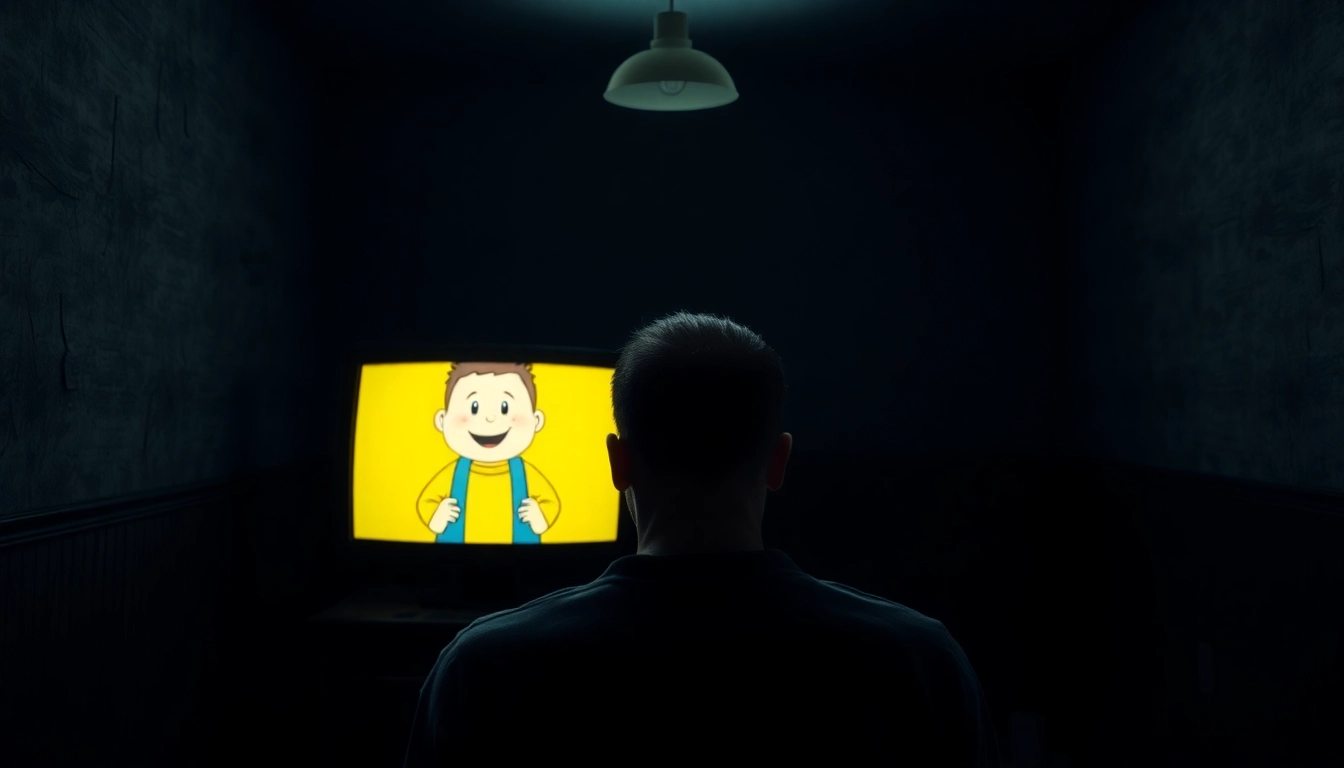Overview and Context: Exploring the Dark Depths of BLOODMONEY
In recent years, the gaming industry has seen a surge of titles that challenge players’ moral boundaries and psychological resilience. Among these, blood money stands out as a disturbing psychological horror clicker game that plunges players into a world of moral decay, emotional torment, and dark choices. Unlike traditional games that focus solely on entertainment, BLOODMONEY offers an unsettling experience that forces players to confront uncomfortable questions about human nature, survival, and the cost of greed. This game is not merely about earning virtual currency; it’s a visceral journey into the human psyche, where each click can either push you closer to salvation or deepen your descent into chaos.
The Core Mechanics and Gameplay Dynamics
Clicking Mechanics and Profit Generation
At the heart of BLOODMONEY lies its straightforward yet profoundly impactful clicking mechanic. Players are tasked with clicking on Harvey, a cheerful and seemingly innocent character, to generate money. The more you click, the faster your funds grow, creating an addictive loop reminiscent of classic clicker games. However, this simplicity is deceptive. Each click isn’t just a means to an end but a catalyst for escalating suffering. With every interaction, Harvey endures increasing pain, and his visual and emotional state deteriorates, subtly signaling the moral cost of your actions.
Upgrade System and Escalation of Violence
The game features an upgrade shop that offers tools to boost earnings. Initially, these are benign—perhaps a pillow or a gentle needle—but as players progress, the options become progressively more violent, including hammers and knives. Each upgrade amplifies profits but at a disturbing cost: Harvey’s suffering intensifies, and his expressions shift from cheerful innocence to visible distress. The upgrade system embodies a twisted risk-reward dynamic, compelling players to decide whether to push for maximum profit or to limit harm, knowing that their choices influence the game’s narrative and ending.
The Dark Narrative of BloodMoney and Its Psychological Horror
The Morality of Survival
The core narrative revolves around a protagonist diagnosed with a severe medical condition requiring $25,000 for treatment—a sum they do not possess. Faced with imminent mortality, the player encounters Harvey, a cheerful figure who offers a bizarre solution: click to earn money. This setup immediately immerses players into a moral dilemma—how much are they willing to sacrifice their morals for survival? The game’s premise is simple but profoundly unsettling, pushing players to weigh financial necessity against the ethical implications of their actions.
The Increasingly Disturbing Visuals and Atmosphere
As the game progresses, visual cues become more unsettling. Harvey’s expressions darken, his reactions to pain become more visceral, and the environment shifts to reflect his mounting suffering. The visuals are subtle yet effective—harsh lighting, trembling animations, and dialogues that hint at Harvey’s awareness of his torment. The atmosphere grows tense, creating a psychological pressure cooker where players are continually reminded of their moral choices’ consequences.
Harvey: The Innocent Facade of Suffering
The Character Behind the Clicks
Harvey, the cheerful and seemingly naive character, is central to the game’s emotional impact. His surprise at more violent tools suggests he might not fully comprehend what’s in the shop, adding a layer of moral ambiguity. Is Harvey genuinely unaware of the extent of his suffering, or is he resigned to it? This ambiguity intensifies the moral complexity, forcing players to consider whether they are exploiting innocence or merely seeking survival. Harvey’s reactions—ranging from cheerful to fearful—serve as a mirror to the player’s choices, making each decision deeply personal and morally charged.
The Guilt and Empathy Dynamics
Players often report feeling genuine guilt when Harvey reacts painfully to certain upgrades. The emotional design of BLOODMONEY is so effective that it evokes empathy, despite the game’s dark premise. Harvey’s innocence contrasts sharply with the brutality of the tools, highlighting the tragic human cost of greed. This emotional depth challenges players to reflect on their own moral boundaries and question whether profit is worth the suffering inflicted.
Upgrade System and the Escalation of Violence
Progressive Tools and Their Psychological Impact
The shop’s upgrade options serve as a reflection of moral descent. Early tools like pillows are harmless, but as players invest more, they unlock needles, hammers, and even more violent implements. Each tool not only increases earnings but also visibly impacts Harvey’s suffering. The game subtly tracks your choices—using certain tools repeatedly can lead to specific endings—making each playthrough uniquely personal. The escalation of violence is designed to test the player’s moral resolve, forcing a confrontation with their own thresholds for cruelty.
Visual Cues and Emotional Responses
Harvey’s visual reactions—trembling, grimacing, or desperate expressions—are carefully crafted to elicit empathy. The game leverages subtle cues such as eye movement, posture, and dialogue to deepen the emotional engagement. The more violent the tools, the more Harvey’s demeanor shifts from cheerful to broken, creating an unsettling atmosphere that leaves a lasting impression.
The Visual and Psychological Impact on Players
Creating an Unsettling Atmosphere
BLOODMONEY masterfully employs visual storytelling to evoke discomfort. Soft lighting contrasts with disturbing imagery, such as Harvey’s pained expressions and the increasingly violent tools. The sound design further amplifies this effect—subtle ambient noises, distressed dialogue, and the visceral sounds of tools impacting Harvey’s body heighten the player’s emotional response.
Testing Moral Boundaries
The psychological horror element intensifies as players watch Harvey suffer more with each click. The game’s subtle cues—Harvey’s changing reactions, dialogue, and visual cues—encourage players to reflect on their moral boundaries. The question becomes: how much suffering are you willing to accept to reach your goal? The game doesn’t offer easy answers; instead, it immerses players in a moral maze where every decision has weight and consequence.
Multiple Endings and Moral Outcomes
The Three Paths to Conclusion
BLOODMONEY’s narrative culminates in three distinct endings, each shaped by the player’s choices throughout the game:
- The Good Ending: Achieved by minimizing Harvey’s suffering, often by avoiding the most violent tools or using them sparingly, leading to a moral victory where Harvey’s pain is kept at bay.
- The Normal Ending: A balanced approach, utilizing some upgrades but not pushing the limits of violence, resulting in a moderate resolution that reflects compromise.
- The Bad Ending: Maxing out profits regardless of Harvey’s suffering, employing the most violent tools like hammers and knives repeatedly, leading to Harvey’s complete breakdown and a morally dark conclusion.
Understanding Your Choices’ Consequences
The game subtly tracks your decisions—how often you click, which upgrades you purchase, and how you react to Harvey’s pain—culminating in these endings. Interestingly, skilled players have discovered that even using certain tools like the hammer can lead to the Good Ending, revealing that the game’s moral system is more nuanced than it appears. Each playthrough offers a different moral perspective, encouraging reflection on what truly constitutes a “good” or “bad” choice.
Community Insights and Player Reactions
Player Reflections and Moral Questions
The BLOODMONEY community is vibrant and introspective. Many players report feeling genuine emotional distress when Harvey reacts painfully, despite knowing it’s a game. Discussions often center around the moral implications—how far one is willing to go for survival, and whether the game’s design effectively forces players to confront their own ethics. Some players see the game as a mirror of real-world dilemmas—how economic pressures can push individuals to make morally questionable decisions.
Revealing Hidden Depths Through Multiple Playthroughs
Players have uncovered subtle details—Harvey’s surprise at violent tools, the varying reactions depending on upgrade choices, and the possibility of achieving the Good Ending with different tools—that deepen the game’s complexity. These discoveries fuel ongoing debates about morality, empathy, and human nature, making BLOODMONEY a game that lingers long after the screen goes dark.
The Game’s Reflection on Human Nature and Morality
Testing Humanity in Desperate Times
At its core, BLOODMONEY is a philosophical exploration. Harvey symbolizes innocence—an embodiment of vulnerability—while the shop and tools represent darker forces. The game questions whether humans are inherently good or evil, especially when survival is at stake. By forcing players into a moral quandary, it reveals how fragile the line is between compassion and cruelty, highlighting that morality is often context-dependent and influenced by desperation.
The Duality of Good and Evil
The duality is further emphasized by subtle visual cues: Harvey’s surprised reactions to violent tools suggest he might not fully understand the consequences, blurring the line between malicious intent and ignorance. The game’s narrative implies that even within the darkest actions, there may be a shred of innocence or ignorance—prompting players to reflect on their own moral compass and the societal structures that shape such decisions.
Conclusion: How Far Are You Willing to Go?
BLOODMONEY challenges players to examine their moral boundaries through a visceral and emotionally charged experience. It artfully combines simple mechanics with profound narrative depth, creating a psychological horror that leaves a lasting impression. Each click, each upgrade, and each choice is a step deeper into a moral abyss, questioning whether survival justifies the means. How much suffering are you willing to inflict for your own benefit? And ultimately, what does that say about human nature?
The game’s multiple endings serve as a stark reminder that every decision carries weight—whether you choose the path of compassion, compromise, or cruelty. As you navigate this dark journey, remember that it’s not just about the virtual money but about confronting the darker aspects of human morality and resilience.
For those intrigued by the unsettling exploration of morality and survival, BLOODMONEY offers an intense, thought-provoking experience. How far are you willing to go when your life hangs in the balance? Discover the answer within this haunting psychological horror—where each click is a moral choice, and every outcome reflects the depths of your humanity.
To explore more about this dark and compelling world, visit blood money. Dive into the game’s disturbing narrative and see where your moral compass takes you. Remember, in BLOODMONEY, the line between good and evil is razor-thin—and only your choices can determine your fate.

